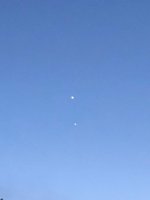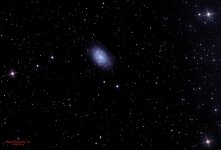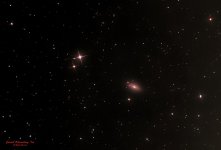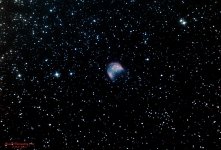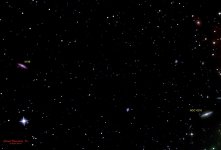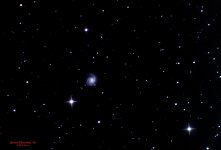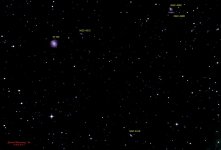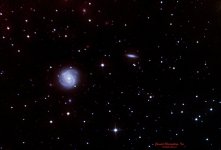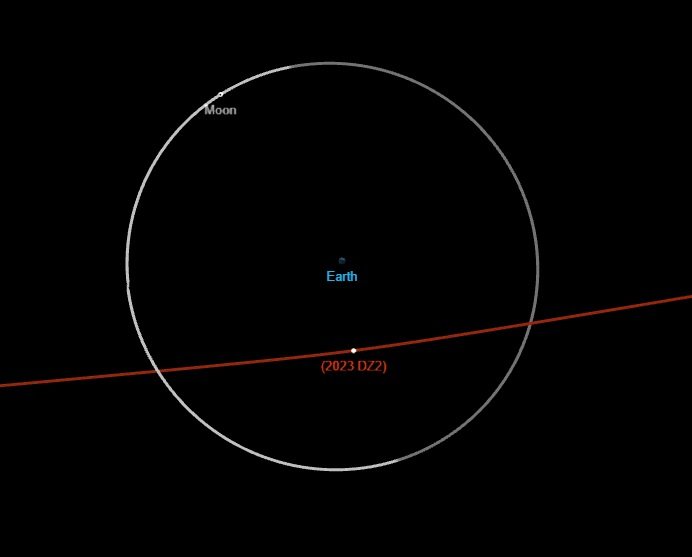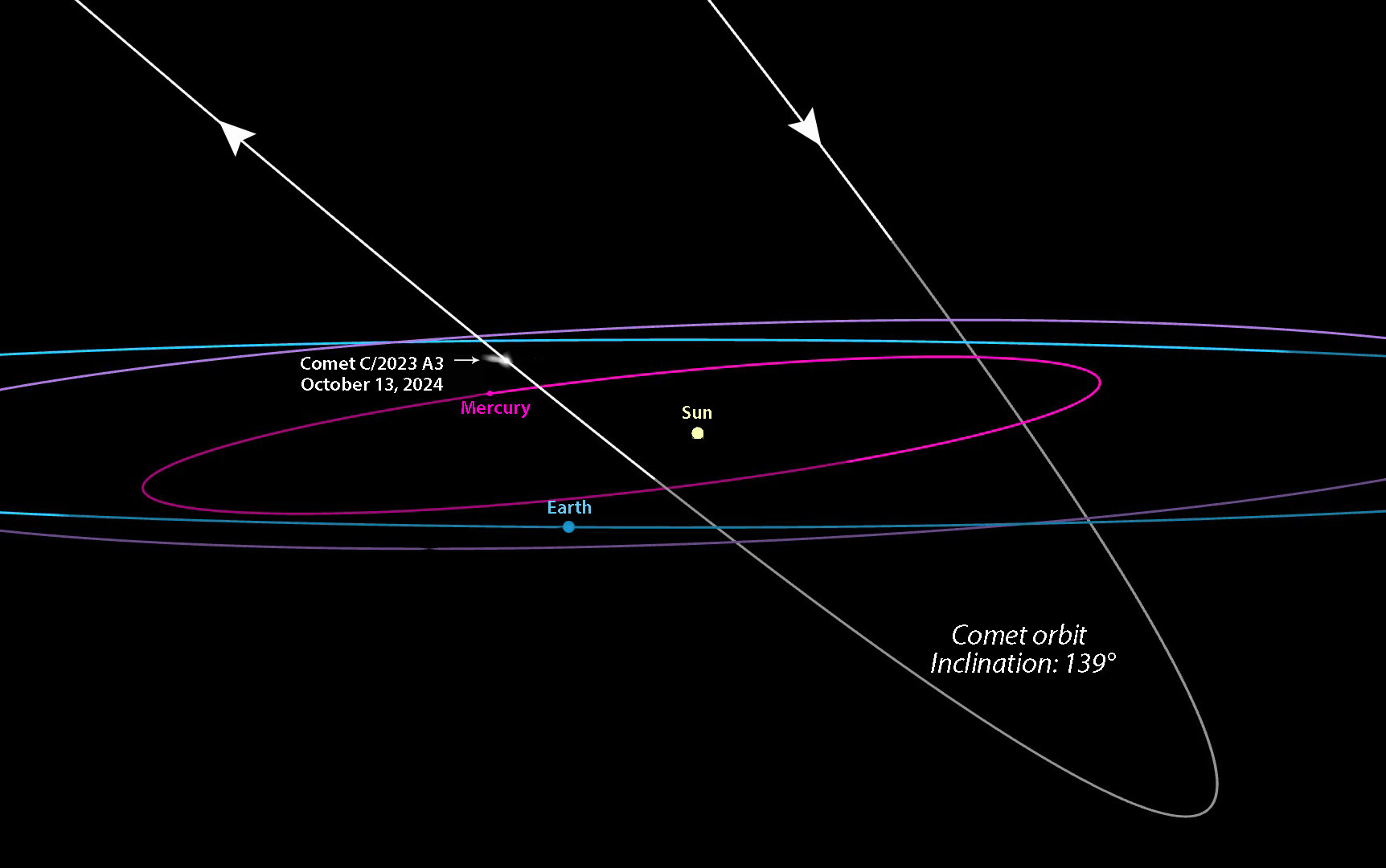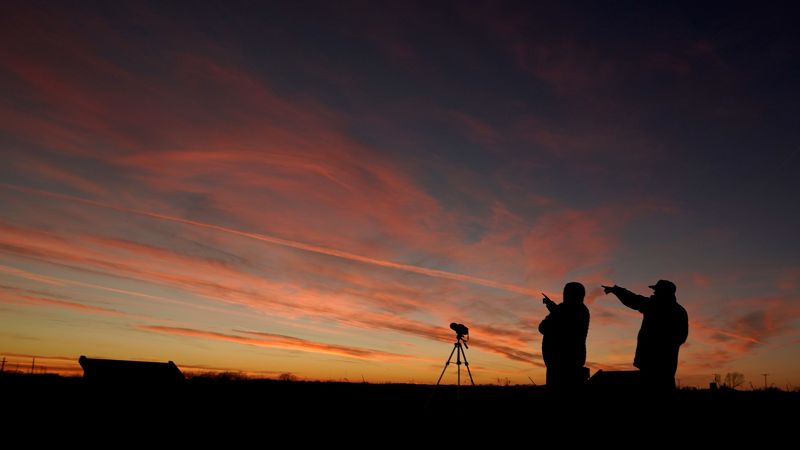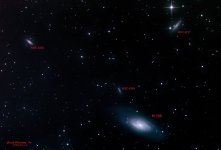With 01 March, we have now entered Galaxy season; however, prior to the turnover of the month and with a break in the weather, the Nebula Division of the Image Acquisition Team got one last chance to fill out the portfolio and hopefully meet the sky-high (pun intended) objectives and goals handed down by Upper Management for targets achieved. Not meeting certain metrics could result in budget cuts to the division and we certainly want to avoid that.
IC 417 + NGC 1931 (Spider and fly) and M 36 are found in the constellation Auriga. An imaginative eye might see in the larger, diffuse IC417 Spider attacking the smaller and compact NGC 1931 fly. NGC1931 is a mixed emission and reflection nebula about 10 light years across. It is lit up by a central cluster of 4 stars in a trapezium configuration. IC 417 is an emission nebula approximately 100 light years across that is energized by embedded hot, massive blue stars. Both nebulae are approximately 10,000 light years distant. M36, sometimes referred to as the Pinwheel cluster, is an open star cluster approximately 14 light years in diameter and composed of approximately 60 proven members. This cluster is about 4100 light years away.
IC 417 + NGC 1931 (Spider and fly) and M 36: 50 x 240 second light exposures; 40 x 240 second dark exposures; OIII/H-alpha duo-narrowband filter:
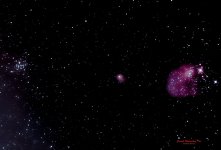
As of midnight, the Galaxy Hunters insisted any images posted must include a galaxy; thus M 97 paired with M 108, satisfying both groups: M 97, the “Owl Nebula”, is a planetary nebula in the constellation Ursa Major. The Owl gets her common name from the 2 dark owl-like eyes. M 97 was discovered by Pierre Mechain in 1781 and Messier added it to his catalogue that same year. Lord Rosse coined the name “Owl Nebula” back in 1848. The distance to M 97 is unknown, with estimates ranging from 1,300 to 12,000 light years, with approximately 2,600 light years being the most likely. At this distance, the nebula would have a diameter of about 2 light years. In the upper left corner, about 1-degree northwest of the Owl is M 108, a barred spiral galaxy, also discovered by Pierre Mechain, in about 1782. Interestingly, M 108 was not officially added into Messier’s catalogue until the 1950’s. M 108 is approximately 45 million light years away and is only getting further, receding at 772 km/second.
M 97 (Owl Nebula) and M 108: 40 x 240 second light exposures; 40 x 240 second dark exposures; OIII/H-alpha duo-narrowband filter:
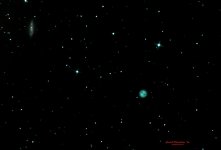
Cheers
IC 417 + NGC 1931 (Spider and fly) and M 36 are found in the constellation Auriga. An imaginative eye might see in the larger, diffuse IC417 Spider attacking the smaller and compact NGC 1931 fly. NGC1931 is a mixed emission and reflection nebula about 10 light years across. It is lit up by a central cluster of 4 stars in a trapezium configuration. IC 417 is an emission nebula approximately 100 light years across that is energized by embedded hot, massive blue stars. Both nebulae are approximately 10,000 light years distant. M36, sometimes referred to as the Pinwheel cluster, is an open star cluster approximately 14 light years in diameter and composed of approximately 60 proven members. This cluster is about 4100 light years away.
IC 417 + NGC 1931 (Spider and fly) and M 36: 50 x 240 second light exposures; 40 x 240 second dark exposures; OIII/H-alpha duo-narrowband filter:

As of midnight, the Galaxy Hunters insisted any images posted must include a galaxy; thus M 97 paired with M 108, satisfying both groups: M 97, the “Owl Nebula”, is a planetary nebula in the constellation Ursa Major. The Owl gets her common name from the 2 dark owl-like eyes. M 97 was discovered by Pierre Mechain in 1781 and Messier added it to his catalogue that same year. Lord Rosse coined the name “Owl Nebula” back in 1848. The distance to M 97 is unknown, with estimates ranging from 1,300 to 12,000 light years, with approximately 2,600 light years being the most likely. At this distance, the nebula would have a diameter of about 2 light years. In the upper left corner, about 1-degree northwest of the Owl is M 108, a barred spiral galaxy, also discovered by Pierre Mechain, in about 1782. Interestingly, M 108 was not officially added into Messier’s catalogue until the 1950’s. M 108 is approximately 45 million light years away and is only getting further, receding at 772 km/second.
M 97 (Owl Nebula) and M 108: 40 x 240 second light exposures; 40 x 240 second dark exposures; OIII/H-alpha duo-narrowband filter:

Cheers

